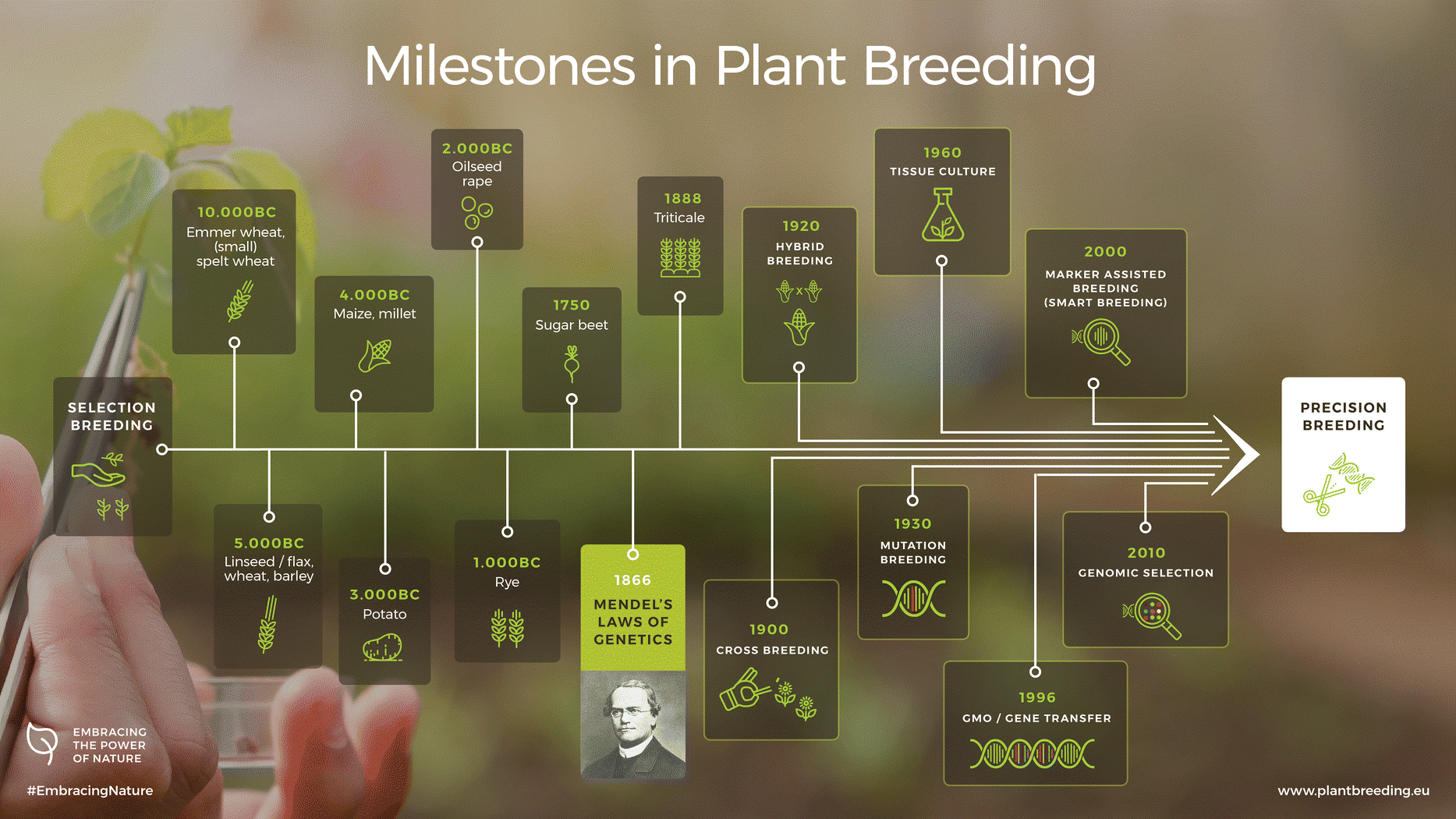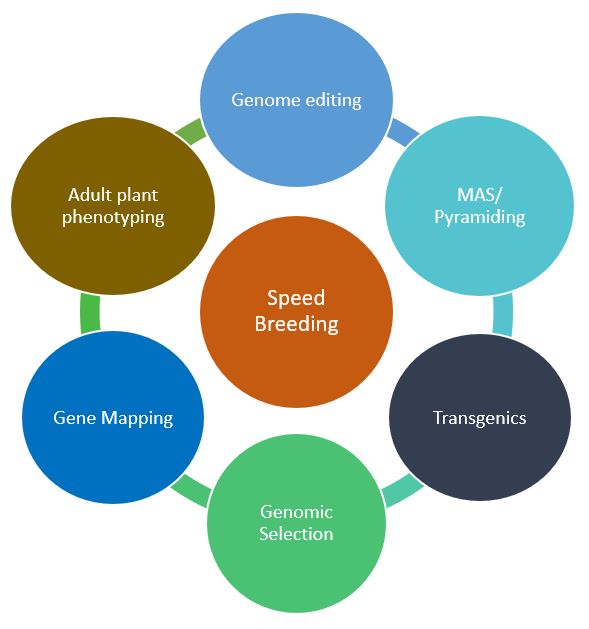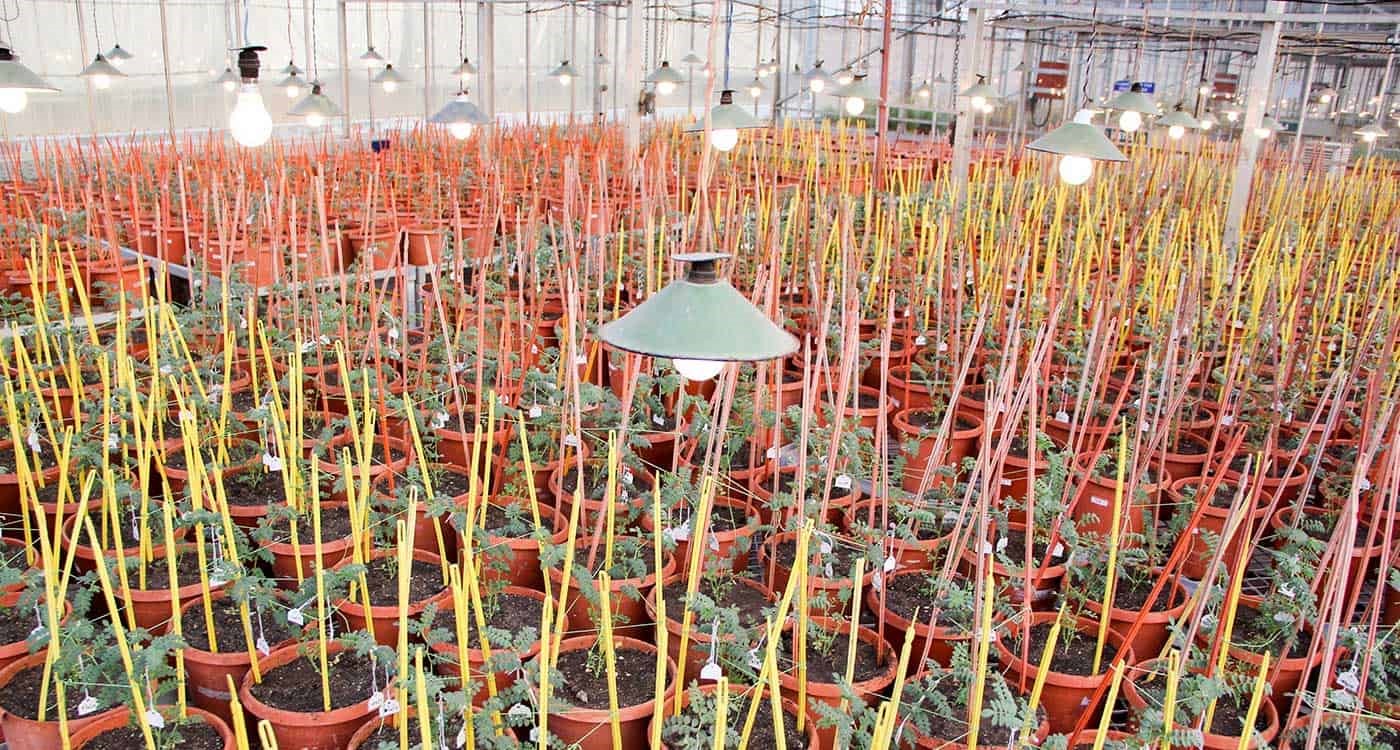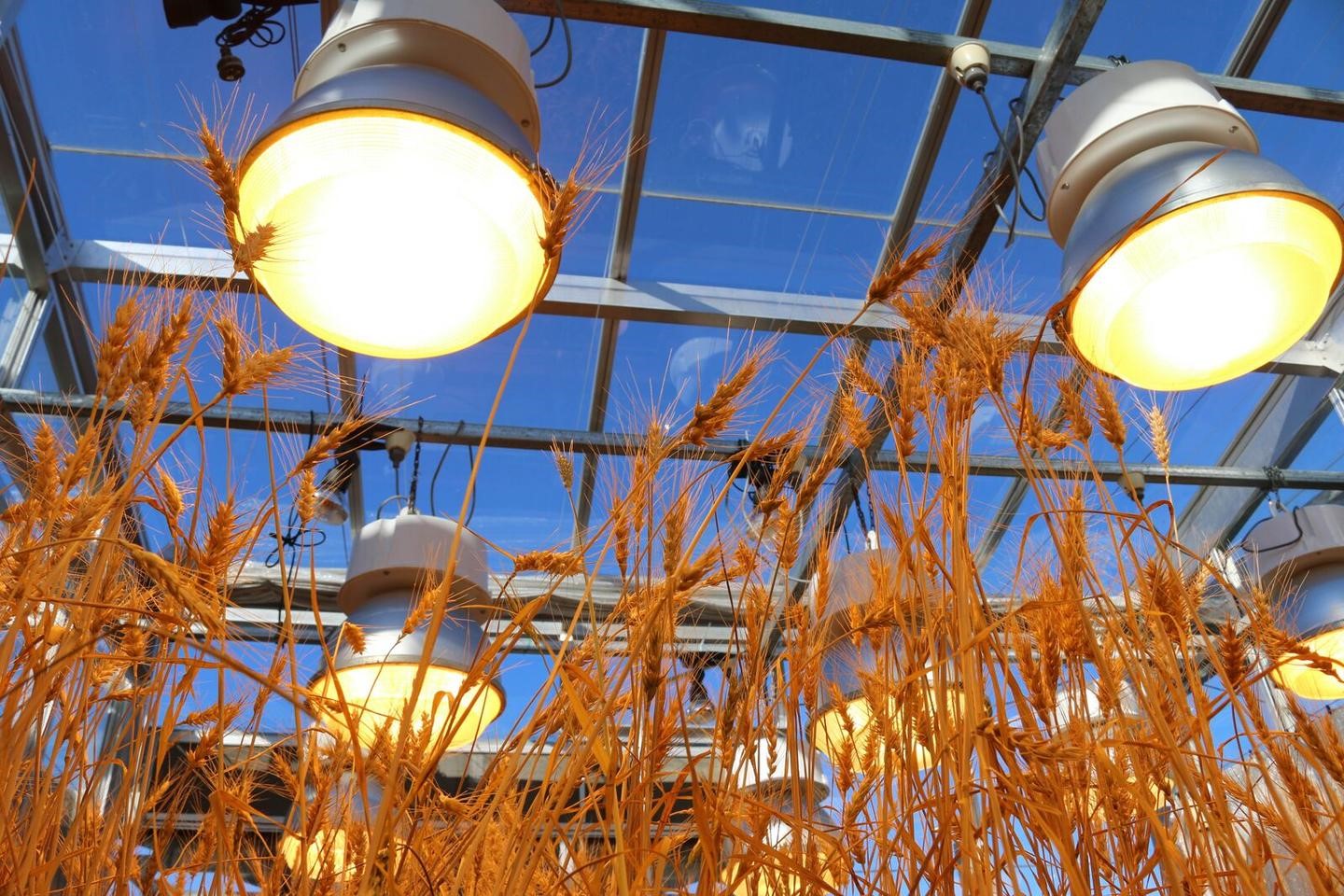SPEED BREEDING: A Promising Approach to Crop Breeding
Rumana Khan, Nethala Aneesha & Akhouri Nishant Bhanu
August 8th 2025, 6:08:20 am | 5 min read

Rapid Generation Advancement promises to be a simple yet cost-effective solution
INTRODUCTION:
To improve the productivity and stability of crops, there is pressure to fast-track research and increase the rate of variety development. The generation time of most plant species represents a bottleneck in applied research programs and breeding, creating the need for technologies that accelerate plant development and generation turnover. To improve the productivity and stability of crops, there is pressure to fast-track research and increase the rate of variety development. The generation time of most plant species represents a bottleneck in applied research programs and breeding, creating the need for technologies that accelerate plant development and generation turnover.
The global population has been growing for several years and is expected to grow by at least 25% geometrically, yet food supplies are still limited. Feeding our growing population is one of the primary concerns of plant breeders. Conventional breeding methods will not be sufficient to meet the demands of future generations, so breeders and cultivators are constantly under pressure to improve crop production and develop new varieties of crops that are of higher quality and yield higher yields that should be of superior quality in every respect, including nutritional value, disease resistance, and climatic changes. Plant breeding needs to deliver a steady stream of modern cultivars in a time- and resource-efficient manner.
HISTORY:
Around 150 years ago, botanists first showed that plants can grow under artificial light using carbon arc lamps. Arthur and colleagues reported that flowering was faster under constant light for the majority of almost 100 plant species, including vegetables, grains, weed species, herbs and garden ornamentals. In 1990, the effects of light-emitting diodes (LEDs) on plant growth were evaluated at the University of Wisconsin. Improvements in LED technology have substantially reduced the cost of indoor plant propagation systems that increase crop productivity. Uses constant light or extended photoperiods & controlled temperature to accelerated plant development. In the mid-1980s, NASA partnered with Utah State University to explore the possibility of growing rapid-cycling wheat under constant light on space stations. This joint effort resulted in the development of ‘USU-Apogee’, a dwarf wheat line bred for rapid cycling.

Breeding cycle time largely determines the efficiency of crop genetic improvement. To shorten the generation time, Watson et al. (2018) proposed a concept of ‘speed breeding (SB)’ by extending the photoperiod and increasing the light intensity during plant growth and achieved up to 6 and 4 generations per year for the spring wheat (Triticum aestivum) and spring canola (Brassica napus), respectively.
Speed breeding is a technique that allows breeders to fasten crop generation in a short period of time. It involves the manipulation of environmental conditions under which crop genotypes are grown, aiming to accelerate flowering and seed set, to advance to the next breeding generation as quickly as possible. Speed breeding techniques can be used to accelerate breeding outcomes such as cross-generation, population mapping, and evaluation of agronomic traits of interest. Plants are grown in CE conditions, and researchers manipulate day/night temperature, available light spectrum and intensity, and photoperiod duration to reduce floral initiation time and accelerate embryo development and seed maturity. Peed breeding techniques, such as the generation of crosses, population mapping, and evaluation of agronomic traits of interest, can be used to accelerate breeding outcomes. Plants are grown in CE conditions, and researchers manipulate day/night temperature, available light spectrum and intensity, and photoperiod duration to reduce floral initiation time and accelerate embryo development and seed maturity. The introduction of advanced LED lighting systems aided efforts to accelerate lifecycle turnover by allowing for the manipulation of wavelength composition to trigger light responses such as shade avoidance and encourage rapid progression to flowering. Under the rapid growth conditions, plant development was normal, plants could be easily crossed (wheat and barley), and seed germination rates were high. We also demonstrated that SB can be used to accelerate gene transformation pipelines and that adult plant phenotyping for traits such as flowering time, plant height and disease resistance in wheat; leaf sheath glaucousness in barley; and pod shattering in canola could be performed under SB conditions.

Role of speed breeding in the enhancement of crop plants:
Compared to traditional selection methods 1 to 2 generations each year, speed breeding produces 3 to 9 generations annually, allowing for the rapid production of homozygous and stable genotypes resulting in the development and release of novel cultivars. There are a number of speed breeding-adapted phenotyping approaches that enable the characterization and selection of crucial features. Integrated phenotyping with speed breeding as a tool for improving yield. Speed breeding can also be utilized to boost the transgenic approaches of crop improvement. The double haploid program is being accelerated by scientists using a speed breeding method. The method has also been modified for high-density plant production systems for SSD applications. Previous speed breeding research showed that the generation time was faster for plants produced at higher densities. Speed breeding could be used to quickly introgress genes or haplotypes into elite lines using marker-assisted selection for genetically well-defined traits. The speed breeding system may be useful for the rapid development of RILs, which are required for molecular marker discovery and also used for Multiple trait pyramiding and selection for yield and grain quality traits.


SPEED BREEDING SETUP:
Lights - covers the PAR region (400–700 nm)- focus on the blue, red and far-red ranges - LEDs or SVLs. Photoperiod - 22h with 2h of darkness - dark period slightly improves plant health. Temperature - higher temperature should be maintained during the photoperiod, whereas a fall in temperature during the dark period can aid in stress recovery. Humidity - 60-70% is ideal.
Methods:
Speed breeding, I - Controlled-environment chamber speed breeding (John Innes Centre, UK).
i. Photoperiod: 22Hrs (light)/ 2Hrs Dark
ii. Temperature: 22°C (photoperiod)/ 17°C (Dark)
iii. Humidity: 70%
iv.Light: white LED, far-red LED & Ceramic metal hydrargyrum quartz iodide lamp
v. Light Intensity: 360–380 µmol m−2 s −1
Speed breeding II - Glasshouse speed breeding conditions
i. A temperature-controlled glasshouse fitted with high pressure sodium vapor lamp.
ii. Photoperiod: 22Hrs (light)/ 2Hrs Dark
iii. Temperature: 22°C (photoperiod)/ 17°C (Dark)
iv. Humidity: 70%
v. Light Intensity: 440-650 (Adult Plant height) μ mol m−2 s −1 (approximately 45cm above bench height).
Speed breeding III - Homemade growth room design for low-cost speed breeding.
i. Photoperiod: 12Hrs-12Hrs (Light-Dark) for four weeks then increased to 18Hrs
ii. Temperature: 21°C (photoperiod)/ 18°C (Dark)
iii. Light: 7 -8 LED light boxes (Grow Candy)
iv. Intensity:210–260 (bench height) & 340–590 (Adult Plant height) μ mol m−2 s −1
OPPORTUNITIES OF SPEED BREEDING TECHNIQUES
1.Rapid development of homozygous lines for accelerated breeding
Manipulation of photoperiod regime. Regulation of the temperature regime. Regulation of soil moisture. The density of plant populations. Modifying carbon dioxide levels. Use of plant nutrition, hormones and organ tissue culture.
2. Amenability with selection methods
Single seed descent method, Single pod descent method, Single plant selection method.

Limitations of speed breeding:
Short-day (SD) plants require the photoperiod to be less than the critical day length to flower which could be at odds with SB conditions. The SB procedures presented here take place in an enclosed, artificial environment, which differs significantly from the field Early harvest of immature seed can interfere with the phenotyping of some seed traits. The initial investment is high. A lack of trained plant breeders and breeding technicians and Inadequate infrastructure. Unreliable water and electricity supplies for sustainable operations. Speed Breeding procedures - crop specific. Intensive monitoring of both biotic and abiotic stresses is needed.
References:
Opportunities and challenges of speed breeding: A review—Wanga—2021—Plant Breeding—Wiley Online Library. (n.d.). Retrieved November 7, 2022, from https://onlinelibrary.wiley.com/doi/full/10.1111/pbr.12909
(PDF) Speed breeding in growth chambers and glasshouses for crop breeding and model plant research. (n.d.). Retrieved November 8, 2022, from https://www.researchgate.net/publication/328998811_Speed_breeding_in_growth_chambers_and_glasshouses_for_crop_breeding_and_model_plant_research
Raju, Ch. S. N., & Sagar, C. K. (2020). Speed Breeding in Agriculture Future Prospects. International Journal of Current Microbiology and Applied Sciences, 9(12), 1059–1076. https://doi.org/10.20546/ijcmas.2020.912.128
Song, Y., Duan, X., Wang, P., Li, X., Yuan, X., Wang, Z., Wan, L., Yang, G., & Hong, D. (2022). Comprehensive speed breeding: A high‐throughput and rapid generation system for long‐day crops. Plant Biotechnology Journal, 20(1), 13–15. https://doi.org/10.1111/pbi.13726
Speed breeding to accelerate crop improvement. (n.d.). Retrieved November 7, 2022, from https://www.peertechzpublications.com/articles/IJASFT-8-261.php